Search Results
Search
Filter results
Advanced Filters
Your search returned 98 Solutions
-
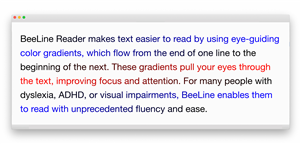
Colour schemes that make texts on screens easier to read
BeeLine Reader, a free web-browser extension developed in the United States, makes texts more readable on a screen, with each line starting with one colour and slowly changing to a second colour. The following line then starts with the same colour. This continuity supports visual tracking.
BeeLine Reader, BeeLine Reader, United States of America -
ITU standard on indoor audio navigation system for the blind
Wayfindr is the world’s first internationally-recognised standard for accessible audio navigation. It was approved in March 2017 by the ITU and gives governments, companies, and NGOs around the world an accepted benchmark along with a host of resources to implement the technology in their own organizations.
ITU - International Telecommunication Union, Regional Presence Europe, Global – International Telecommunication Union – International standard for indoor audio navigation, United Kingdom -
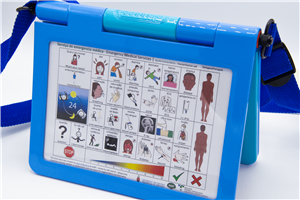
An online toolbox of symbols enabling communication for all, without the use of language
Global Symbols, an NGO from the United Kingdom, provides graphic symbols for assistive and alternative forms of communication as well as online tools for their use, but also for creating your own symbols. The offer is free and open source. In 2021 more than 5,000 people used Global Symbols, and a training programme was developed with UNICEF.
Global Symbols CIC, Global Symbols CIC, United Kingdom -
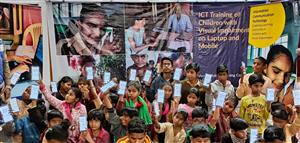
A concerted effort for the usage of accessible ICT devices supporting children with disabilities in low-income contexts
Sightsavers India, a national NGO, promotes inclusive education with accessible ICT devices in remote areas. In 2022, it supported over 6,000 visually impaired learners across mainstream primary and secondary schools.
Eight-State Inclusive Education Programme, India -
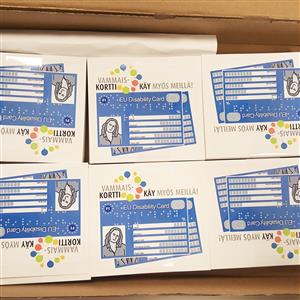
A Disability Card to Support Equal Access
The European Union launched an "EU Disability Card" pilot in 2016, which is a universally recognized way for people with disabilities to communicate their needs and access support. Finland is participating in the pilot. Between June and October 2018, over 4,000 people with disabilities have requested the card in Finland.
KVPS - Service Foundation for People with Intellectual Disability, EU Disability Card Implementation, Finland -
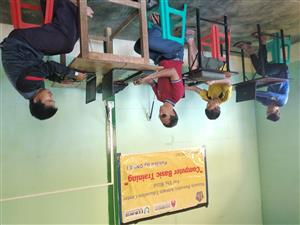
Building a tech infrastructure, training, and IT job creation for persons with visual impairments
Living Dignity for the Blind, Myanmar: Offers decentralized training for visually impaired individuals in remote areas. The program has expanded to several regions, with trained individuals finding tech-related jobs.
Promoting technology and capacity-building towards employment, Myanmar -
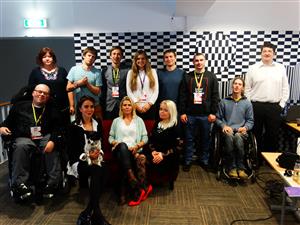
Service IT-platform available in several European countries
In 2015, Helpific started a web-based IT-platform that connects people who need assistance in independent living to local volunteers and paid support. The IT-platform enables people to post requests as well as offers of support in a variety of categories. In 2018, Helpific had more than 6,200 registered members.
Helpific Estonia, Estonia -
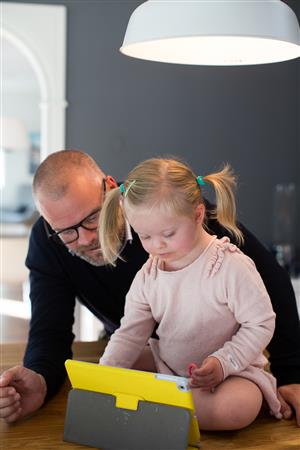
App to support persons with speech and language difficulties to communicate
Milla Says from Norway launched a web-based sign language service in 2018 that combines a user-created vocabulary with a standard library of Norwegian signs, and in which custom gestures can be shared within the network. In 2022 there were 200 end users, 1,400 network members, and 56,000 created signs.
Milla Says, Milla Says, Norway -
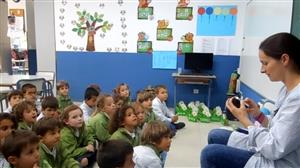
Noise-free school model inclusive of students with hearing impairments
Classrooms at Tres Olivos School are built with sound-absorbing materials and equipped with sound-level meters. The school has 98 teachers (including seven speech therapists and two deaf teachers) and 1,100 students who are educated from early childhood to high school and also in two vocational trainings.
Dales la Palabra Foundation, Tres Olivos School, Spain -
Entrepreneurship training and support for persons with disabilities
The programme supports the self-employment of people with disabilities. Launched in 2018, the project was implemented in seven provinces by 2020. Of the 502 young entrepreneurs who received support after start-up, 360 are succeeding as entrepreneurs and 12 have secured sustainable employment.
KFF - Kadiwaku Family Foundation, Inclusive Entrepreneurship for Persons with Disabilities, Congo